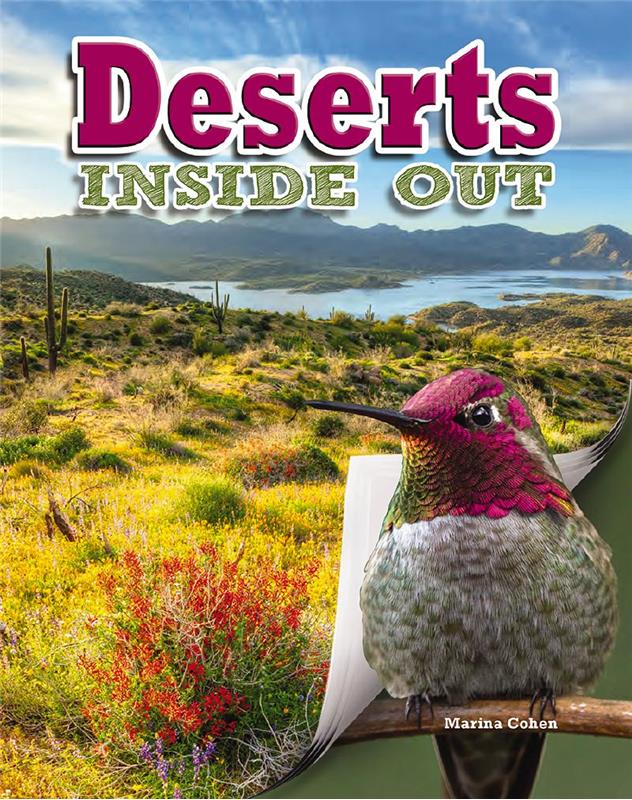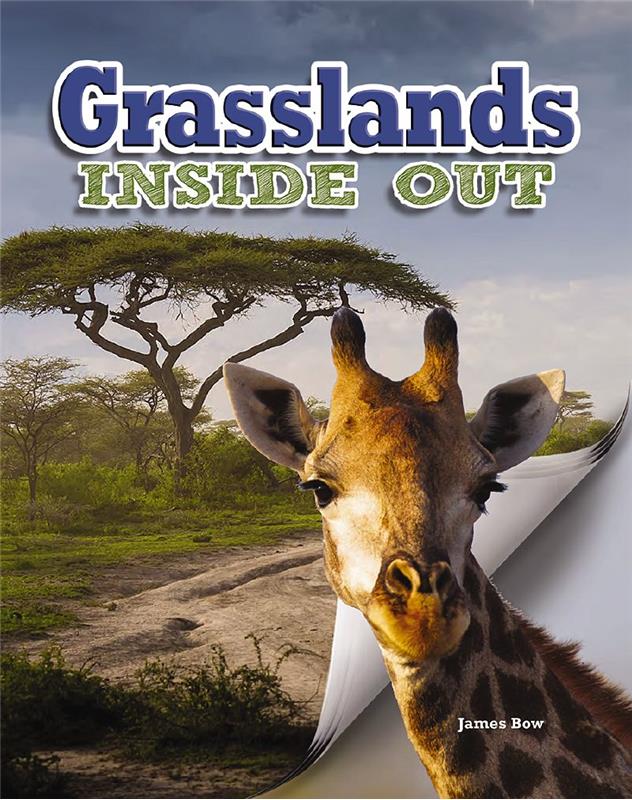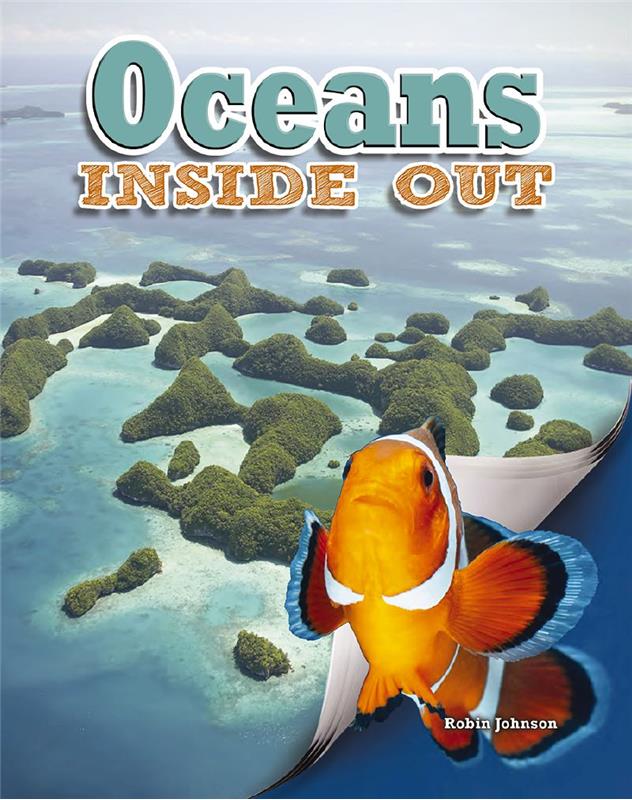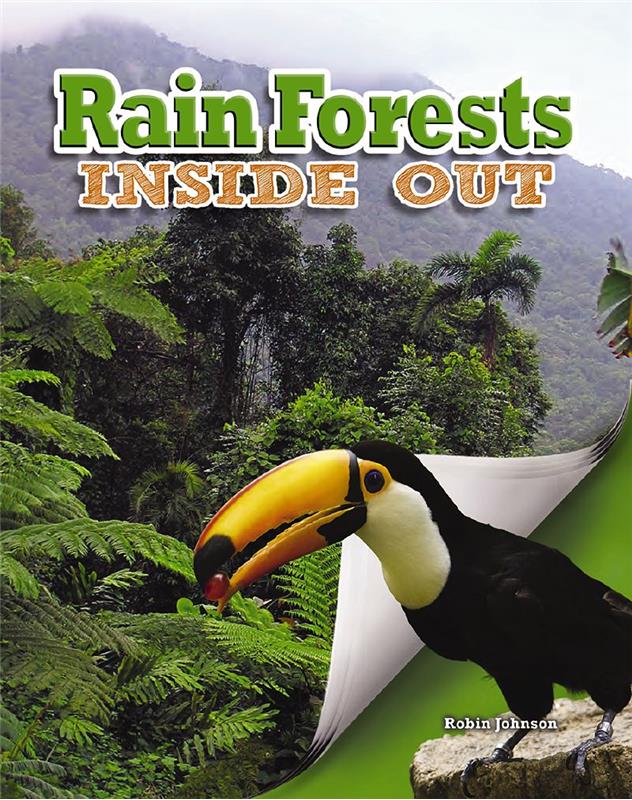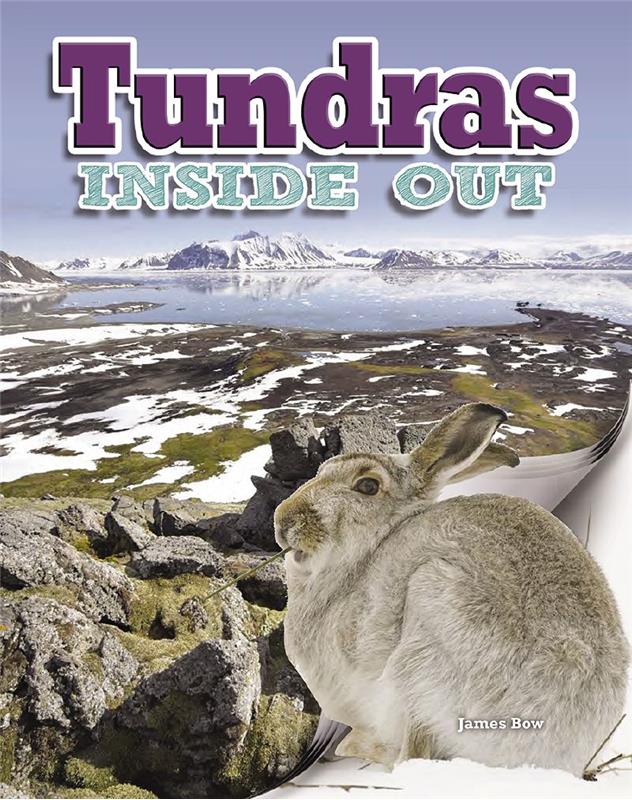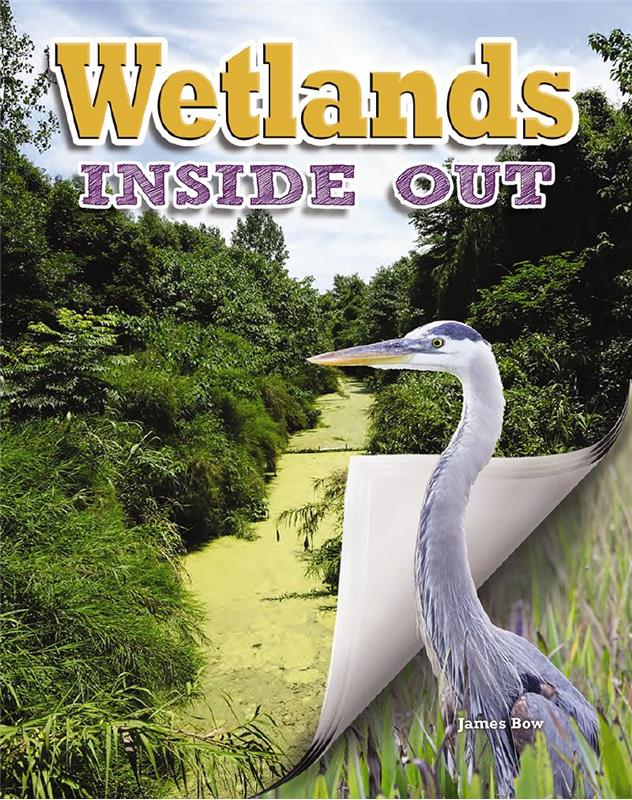| ________________
CM . . .
. Volume XXI Number 34 . . . . May 8, 2015
excerpt:
The six-volume “Ecosystems Inside Out” series examines the Earth’s biomes and provides information about the interdependence between the plants and animals that live there. Each of the titles begins in a similar fashion with an introduction to ecosystems and such terms as biotic, abiotic and biome. Their layouts are identical as well, with a double-page spread devoted to each of the 13 chapters. Following a two or three paragraph explanation of the specific topic, the chapter includes an “Eco Up Close” section consisting of a close-up photo of a plant or animal that inhabits that particular area of the world and a text box explaining the specific adaptation of that organism. One example is the redwood sorrel, a short flowering plant which grows on the shady rain forest floor. To protect itself from the sun’s damaging rays, its leaves fold downward in direct sunlight. “Eco Focus” text boxes present real-life scenarios, usually related to the environment and the preservation of a species or biome. These text boxes invite readers to think critically about the issue. There is also an activity to try at the back of the book. Throughout the series, the underlying theme is the delicate balance in an ecosystem, where one seemingly small change can adversely affect- or even destroy- an entire ecosystem, The books give an example of a food chain specific to the featured ecosystem, provide information about the various flora and fauna present, and offer suggestions for protecting the environment. Though the sentences are fairly short and simple, suitable for the target audience, some of the vocabulary is rather sophisticated: terms, such as symbiosis, parasitism, mutualism, commensalism, predation, opportunistic feeders and symbiotic relationships are used frequently. Illustrations consist of maps, diagrams and colour photographs. One minor flaw is that, occasionally, rare animals or plants from other parts of the world are mentioned in the text, but there are no accompanying photos, leaving the reader without a frame of reference. A table of contents, a glossary and an index are included, along with a list of books and web sites for further study. Deserts Inside Out highlights the major deserts of the world- the Sahara, Mojave, Gobi, Chihuahuan, Atacama, Sonoran, Kalahari, Arabian and the Great Sandy Desert in Australia. Some readers might be surprised to learn that Antarctica is considered a desert even though its climate makes it the windiest and coldest continent on Earth. Subtopics in this title include the growth of deserts through overfarming, overgrazing and climate change, the adaptations which help desert animals and plants to survive in such a harsh environment, the problems caused by invasive species, and the role of apex predators, consumers, producers and decomposers. Depending on their location, grasslands can vary, both in appearance and climate. Grasslands Inside Out showcases a number of different types of grasslands, from the temperate grasslands of the Canadian prairies on which bison roam, to the short grass, tall grass and mixed grass prairies of the United States. Also featured are the Eurasian Steppe with its short grasses and small plants, the sub-tropical southern African Veld, where drought and wildfires are common, the African Savanna, an example of a tropical grassland, island grasslands, and the South American Pampas, fertile lowlands in a windy and humid climate. Perhaps the least known, however, are the Montane grasslands which are located between the tops of mountains and the treeline, and xeric shrublands which exist in extremely dry places and are considered semi-desert. Oceans Inside Out is particularly interesting because the ocean is not static- it is always moving. Different parts of the ocean have different ecosystems, and, since water is always in motion, ocean habitats are constantly changing. Organisms must adapt to varying water temperatures, depths, pressure, and the amount of sunlight, air and salinity. Oceanographers divide the ocean into zones, depending on the amount of sunlight the zones receive. Animals and plants have developed remarkable ways of surviving, especially in the darkest depths of the ocean. Some animals also need to adapt to the thermocline, the invisible boundary between waters that have very different temperatures. Other topics in this title include rocky and sandy shores and the four parts of the intertidal zone, kelp forests, coral reefs, and tropical and arctic oceans. The activity at the back of the book is designed to show readers the negative effects of an oil spill. Tropical rain forests cover only six per cent of the Earth’s surface, but more than 50% of the world’s plant and animal species live there. The Amazon rain forest, for example, is home to one out of every 10 known species, and there is more biodiversity in rain forests than in any other biome on Earth. Rain Forests Inside Out shows readers the layers of the rain forest- the emergent layer, the canopy, the understory and the forest floor- and a few of the organisms that dwell in those layers. An example is the three-toed sloth which lives in the canopy. It has a mutualistic relationship with the green bacteria that lives on its fur: the sloth provides a home for the bacteria, while the green colour of the bacteria camouflages the sloth in the leaves. The activity asks readers to select a food that comes from the rain forest- be it bananas, chocolate, coffee, vanilla, or sugar- and trace its path from the rain forest to the refrigerator. Ecosystems beyond the treeline are called tundras, treeless plains characterized by a cold, dry climate with long winters and cool summers, and permafrost, soil made from gravel or sand and held together by frozen water. Tundras Inside and Out discusses the effects of polar days and nights, the special physical and behavioural adaptations which enable plants and animals to inhabit the tundra, and some of the rare flora and fauna that are found nowhere else on Earth. Alaska, Siberia, Scandinavia, Greenland, Canada, the Antipodes Subantarctic and the Alpine tundra are all featured. This title is the only one that makes mention of a particular group of people that inhabits the biome- the indigenous people of the Arctic tundra. Despite their entering the ecosystem, they lived in balance with it, and it wasn’t until the arrival of the Europeans that the ecosystems were damaged by overhunting, and today, even more damage is caused by people drilling for oil and natural gas. The activity at the back of the book provides instructions for creating permafrost and observing the changes as it melts. Wetlands have different names, depending on where the water comes from or what grows there. Swamps, for example, get their water from lakes and streams, while bogs are fed by rain or underground springs, and fens are low lying areas where water from streams can get in, but not out. Both bogs and fens are types of mire or muskeg. Ponds and marshes are what remain when trees are removed from swamps. One example is Manitoba’s own Delta Marsh. In Wetlands Inside and Out, readers will also learn about estuaries which provide food for birds and fish, tidal flats, and salt marshes which create a barrier between the ocean and inland freshwater systems. A new term in this title is “pioneer species” which refers to one of the first species to arrive in an area (in this instance, the pioneer species is the black spruce). Some of the wetlands featured are the West Siberian Plain (the largest wetland in the world), the Pantanal of South America, the Hudson Bay Lowlands (the largest wetland in North America), and the Florida Everglades, where the alligator is the apex predator. One interesting topic in this title is the creation of artificial wetlands, “living walls” and “green roofs”. Worthy of purchase, the “Ecosystems Inside Out” series will be useful in a classroom or school library. Recommended. Gail Hamilton is a former teacher-librarian in Winnipeg, MB.
To comment on this title or this review, send mail to cm@umanitoba.ca.
Copyright © the Manitoba Library Association. Reproduction for personal use is permitted only if this copyright notice is maintained. Any
other reproduction is prohibited without permission.
CM Home | Next Review | Table of Contents for This Issue - May 8, 2015 | Back Issues | Search | CM Archive | Profiles Archive |
